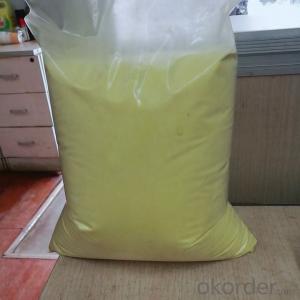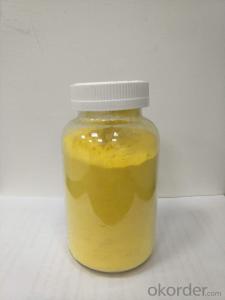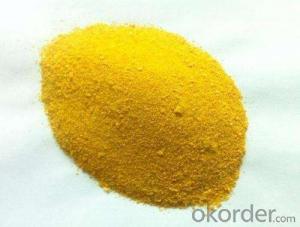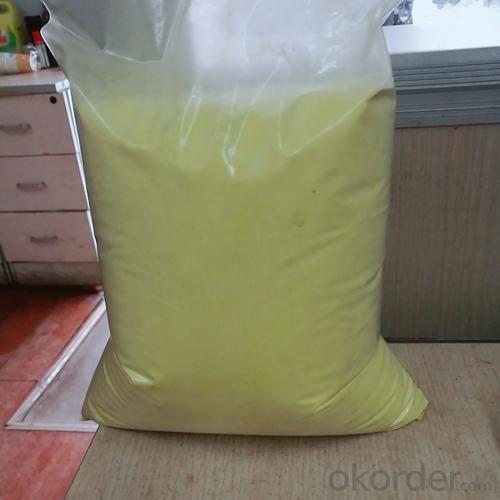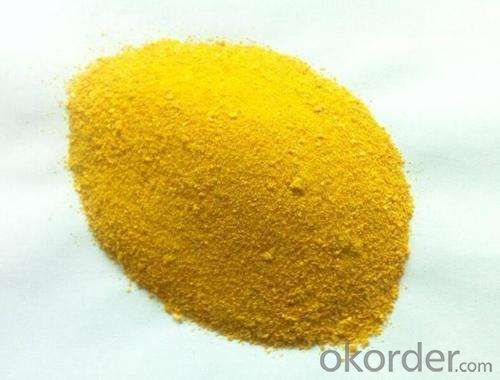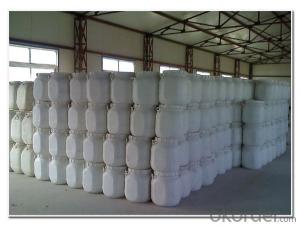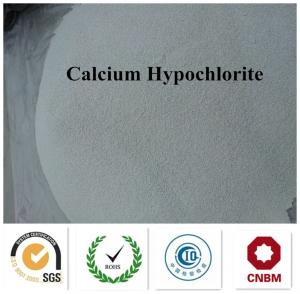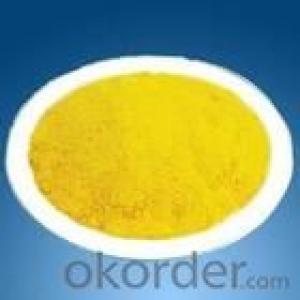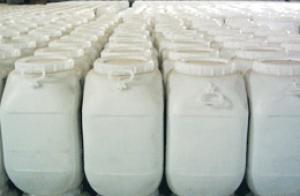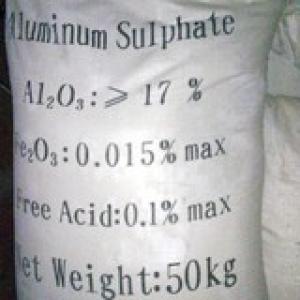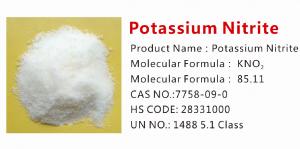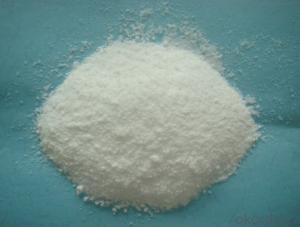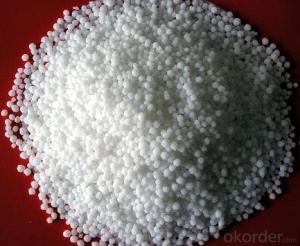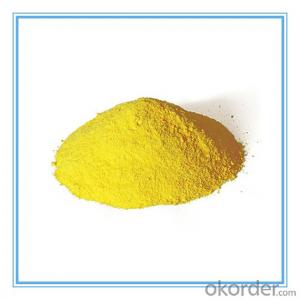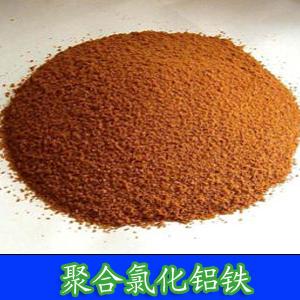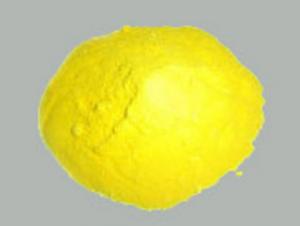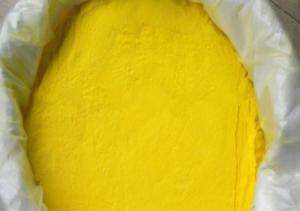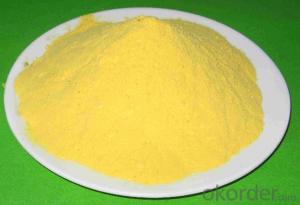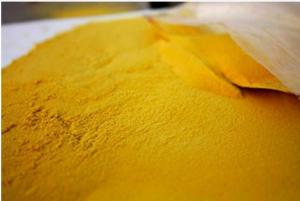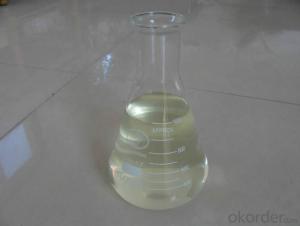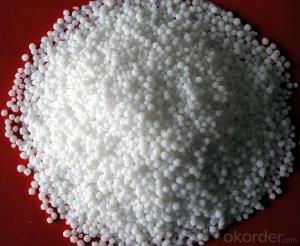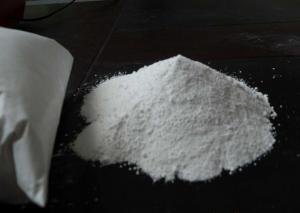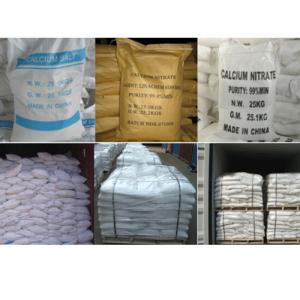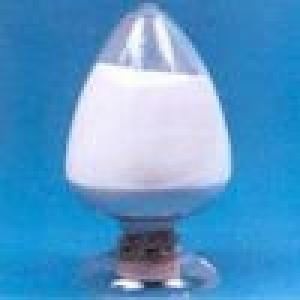Water Treatment Chemicals Poly Aluminum Chloride
- Loading Port:
- China main port
- Payment Terms:
- TT or LC
- Min Order Qty:
- 50 m.t.
- Supply Capability:
- 10000 m.t./month
OKorder Service Pledge
OKorder Financial Service
You Might Also Like
High Purity Poly Aluminium Chloride (Spray Drying Type, CAS.No.1327-41-9)
This product is manufactured by spray drying process and raw materials of good quality. It is widely applied in the drinking water and top-quality water treatment.
Properties
1. Appearance: White Powder
2. Made from pure raw material
3. Used for drinking water treatment and paper mills as retention agent
Specifications
Item | Index |
Al2O3(%) ≥ | 29 |
Basicity (%) | 50-80 |
Insoluble substance (%) ≤ | 0.5 |
PH(1% water solution) | 3.5-5.0 |
The product can be made upon customers' special request.
Application Method & Notes
1. Dilution is necessary before dosing for the solid product. The normal dilution ratio is 2%-20% (based on weight percentage).
2. The specific dosage is based on the flocculation tests and trials by the users. The usual dosage of is 1-15 g/ton.
3. The product can not be stored with other chemicals.
4. The product is packed in inner plastic bags and further in polypropylene woven bags, with each bag containing 25 Kg or 500Kg.
5. The shelf life is one year. The product should be stored in a dry and ventilated place, but the effect will not be affected even if it gets wet.
Poly Aluminium Chloride
(Spray Drying Type, for drinking water,CAS.No.1327-41-9)
This product is manufactured by spray drying process and raw materials of good quality. It is widely applied in the drinking water and top-quality water treatment
Properties
1. Appearance: Light Yellow Powder
2. It can lead to quick formation of flocks with big size and rapid precipitation.
3. Used for drinking water treatment.
Specifications
ITEM | SPECIFICATION |
Appearance | Light Yellow Powder |
Al2O3%, min | 29 |
Basicity | 40-90 |
Insoluble %, max | 0.6 |
PH (1% solution) | 3.5-5.0 |
NH3-N, max | 0.01 |
As, max | 0.0002 |
Cr6+, max | 0.0005 |
Hg, max | 0.00001 |
Pb, max | 0.001 |
Cd, max | 0.0002 |
The product can be made upon customers' special request.
Application Method & Notes
1. Dilution is necessary before dosing for the solid product. The normal dilution ratio is 2%-20%(based on weight percentage).
2. The specific dosage is based on the flocculation tests and trials by the users. The usual dosage of is 1-15 g/ton.
3. The product can not be stored with other chemicals.
4. The product is packed in inner plastic bags and further in polypropylene woven bags, with each bag containing 25 Kg or 500Kg.
5. The shelf life is one year. The product should be stored in a dry and ventilated place, but the effect will not be affected even if it gets wet.
Poly Aluminium Chloride
(Spray Drying Type, for industry water, CAS.No.1327-41-9)
This product is manufactured by spray drying process and raw materials of good quality. It is widely applied in the process water and waste water treatment.
Properties
1. Appearance: Light Yellow Powder
2. It can lead to quick formation of flocks with big size and rapid precipitation.
3. It has wide-range adaptability to the waters at different temperatures and a good solubility.
Specifications
Item | Index |
Appearance | Light Yellow Powder |
Al2O3 (%) ≥ | 30 |
Basicity (%) | 40-90 |
Insoluble substance (%) ≤ | 0.3 |
PH(1% water solution) | 3.5-5.0 |
The product can be made upon customers' special request.
Application Method & Notes
1. Dilution is necessary before dosing for the solid product. The normal dilution ratio is 2%-20% (based on weight percentage).
2. The specific dosage is based on the flocculation tests and trials by the users. The usual dosage of is 1-15 g/ton.
3. The product can not be stored with other chemicals.
4. The product is packed in inner plastic bags and further in polypropylene woven bags, with each bag containing 25 Kg or 500Kg.
5. The shelf life is one year. The product should be stored in a dry and ventilated place, but the effect will not be affected even if it gets wet.
- Q: Nutritional characteristics of carbohydrates and inorganic salts in vegetables
- Inorganic salts: its rich, such as calcium, phosphorus, iron, potassium, sodium magnesium, copper, is an important source of inorganic salts, to maintain the body's role in acid-base balance play an important role. Green leafy vegetables generally contain more than 100mg / 100g. But should pay attention to the removal of part of the oxalic acid during cooking, may be conducive to the absorption of inorganic salts.
- Q: Sodium bicarbonate is not an inorganic salt
- Yes, organic refers to salts with carbon skeleton chains other than carbon and carbon oxides and carbonates, so sodium bicarbonate is an inorganic salt
- Q: How much of the body's inorganic salts account for the weight of the body?
- The inorganic salts in the human body account for about 5%
- Q: Chemical formula The longest inorganic salt
- The primary stage on the salt, acid salt and so on
- Q: By balancing the benefits of dietary supplementation with inorganic salts, what are the advantages and disadvantages of taking health care agents?
- Obviously, the advantages of taking health care agents are targeted, quick and effective; the disadvantage is to maintain the problem after the effect is like a hormone therapy, hormone therapy after the effect is very good, and physically strong after the virus may be recovered It is very effective, some poor physical is not the case. Poor physique, perhaps more suitable for "balanced dietary supplement".
- Q: The lack of symptoms and food sources of several inorganic salts
- Food sources of inorganic salts containing calcium Source: dairy products, beans, cereals, kelp and so on. Source: seafood, etc. Food of iron-containing inorganic salts Source: Fruits Containing iodine-containing inorganic salts Source (trace): seaweed, jellyfish, corn, mussels, etc. Zinc-containing inorganic salt food sources (trace): animal liver (viscera), fruit, peanuts, etc.
- Q: Why are inorganic sodium salts much better soluble in ethanol than potassium salts?
- Sodium ions are smaller cations than potassium ions. Ethanol has a polar bond in the OH, but it also has a nonpolar tail, the ethyl group. So, unlike water, that has two OH groups that are polar and can interact with cations, ethanol has only one, so it requires strong electrostatic attractions to form a hydrogen bond - dipole interaction with any cation that it encounters. Being smaller, the sodium ions have their positive charge concentrated over a much smaller volume, so the polar OH bond in ethanol is more strongly attracted to the concentrated charge of the sodium than to the diffuse charge of the potassium ion, making the salt more soluble in this solvent.
- Q: Now need to determine the freezing point of inorganic salt solution, what kind of freezing point instrument is more accurate?
- Because a large branch of antifreeze is with inorganic salt solution.
- Q: I am a candidate for this year's Harbin City, Jiqiu the standard answer, tomorrow I will test !!!
- The distribution of inorganic salts in the human body is extremely uneven. For example, calcium and phosphorus are mostly in hard tissue such as bone and teeth, iron is concentrated in red blood cells, iodine is concentrated in the thyroid, barium is concentrated in adipose tissue, cobalt is concentrated in hematopoietic organs, and zinc is concentrated in muscle tissue.
- Q: Inorganic salt is not salty
- NaOH (sodium hydroxide) dilute: basically with the thick Na2CO3 (I tasted, salty), more spicy (strong resistance to protein corrosive). Concentrated: very spicy in the mouth ( May have been a reaction) and then burned the tongue, was **, meat rot, 1 month can not speak, mouth pain and tongue numbness has a sense of spicy six months after discharge, speech becomes not allowed, the taste almost disappeared, The mouth left a scar (this thing on the protein reaction is not a joke ... ...).
Send your message to us
Water Treatment Chemicals Poly Aluminum Chloride
- Loading Port:
- China main port
- Payment Terms:
- TT or LC
- Min Order Qty:
- 50 m.t.
- Supply Capability:
- 10000 m.t./month
OKorder Service Pledge
OKorder Financial Service
Similar products
Hot products
Hot Searches
Related keywords
